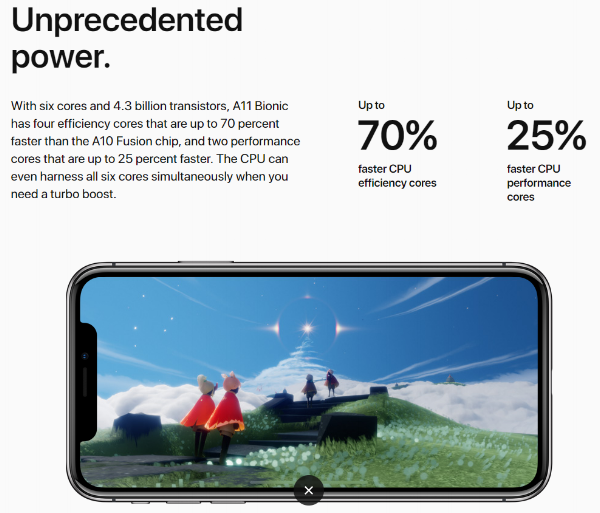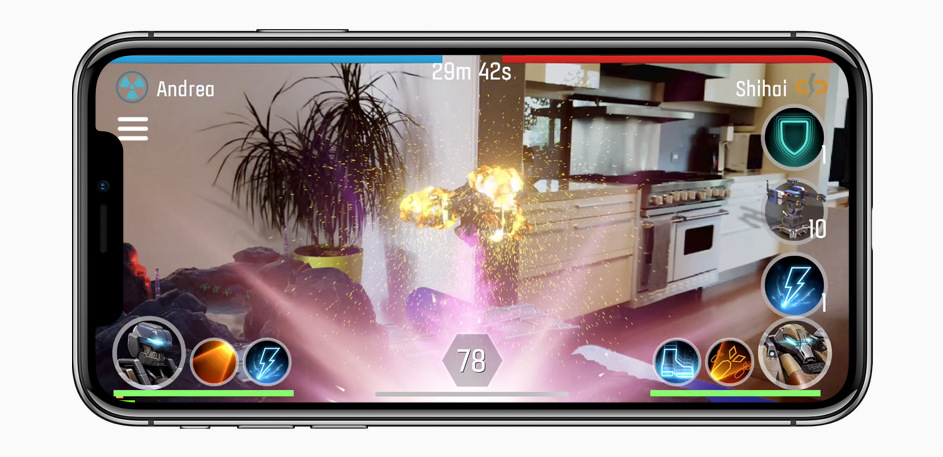Apple A11 Processor in iPhone 8 and X Shows Value of Custom Silicon
/Apple announced the new iPhone 8 and iPhone X yesterday and the majority of the discussion will center around the high prices of the flagship models, the design and integration of the edge to edge screen, and remaining concerns about availability of the $999 version. But this generation of iPhone also brings with it a significant shift in the silicon design that powers Apple’s smartphones. With both the iPhone 8 and the iPhone X, the company is using in-house designed processors nearly exclusively.
The new iPhone 8 and iPhone X offer a platform to demonstrate the continued dominance of Apple in both product and silicon development. The platform they have built, combining the operating system, hardware development, product implementation, and even application ecosystem, gives the company a significant advantage over any other single player in the Android market. Qualcomm can compete from a SoC design and performance perspective, but it doesn’t have the ability to enforce changes in Android or how its partners implement Snapdragon processors. Google has fostered a larger, more open, and lower cost operating system and environment for the masses but it struggles to push partners to build flagship products and to keep operating system updates frequent (that improve performance, add features, and keep us secure). Companies like Samsung and LG must depend on the roadmaps of both Google, ARM, Qualcomm, and others to create a product that can compete with the best from Apple.
The slow but methodical progression of Apple from a silicon buyer to a silicon builder has created an organization that depends on few and dominates most. With continued investment in in these areas, building the fastest (or close to it) and most efficient processors will give Apple an advantage over the phone, tablet, wearables, and connected devices markets for years to come.
Source: Apple
The Apple A11 Bionic is an SoC (system-on-chip) that integrates standard processing cores, graphics, an image processor, a motion processor, and even a new Neural Engine to aid in face recognition technology.
Primary processing is driving by a custom-built 6-core design that uses the common ARM architecture found in nearly all other smartphones and tablets on the market. Apple customizes its design beyond the ARM-provided options that many Android phones utilize. By integrating a set of four high efficiency cores for sleep states and light tasks like email and messaging, Apple claims to improve performance over the A10 Fusion used in the iPhone 7 and iPhone 7 Plus by 70% without decreasing battery life. Considering the A10 processor used only two high efficiency cores (rather than the four used on new processor), that claim should be easy to meet. The new A11 has two cores for high performance workloads (think gaming, machine learning) that Apple states are 25% faster than iPhone 7.
Apple’s custom processor designs make for a complex architectural comparison between phones but the importance of the performance impact cannot be understated. Since going the custom design route, Apple has dominated Qualcomm and other ARM designs in single-threaded performance, the metric generally associated with user experience, responsiveness, and interaction. Essentially, better single core and thread performance gives the phone the feeling of going faster, even if it is slower in more complex tasks. Apple above any other vendor focuses on the consumer experiences, so the processor design matches the company philosophy.
Source: Apple
The A11 processor found in the iPhone 8 and iPhone X mark the first time Apple is using a custom-built graphics core in an SoC. Previously Apple had a license with Imagination Technologies but it was announced in April that Apple intended to abandon its long-running relationship with Imagination and pursue its own designs. Though the long-time mobile graphics designer has threatened Apple with lawsuits over intellectual property concerns with this direction, Apple has the resources and finances to retain some of the top talent in mobile graphics. The result is a graphics system that will be dissected thoroughly by external interests but that Apple claims will improve gaming and graphics performance over the A10 from the iPhone 7 by 30%.
Building its own graphics core rather than depending on an external design allows Apple to pinpoint future technological advances and build a complete system of processors to handle workloads the company feels will be critical to future device success. Apple mentioned machine learning and augmented reality as two of the key tenets of the iPhone 8 and X. Building a complex SoC like the Apple A11 Bionic is a difficult task and to better extract performance efficiency (which is crucial for mobile devices that have limited peak power consumption), having control over all aspects of the architecture and design are critical. Qualcomm has levied this for years by combining resources of processors, graphics, image signal processors, and DSPs (digital signal processors), into easily addressable software packages for developers.
Even the new flagship feature, FaceID, requires custom hardware and processing in the form of a Neural Engine capable of 600 billion operations per second. Last month, Android processor provider Qualcomm went on a press tour demonstrating its own implementations of facial recognition and depth sensing in an attempt to undercut Apple’s ability to feign creation of the technology. FaceID will use the use the most complex set of cameras, sensors, and infrared light emitters (that are invisible to the naked eye but useful for measuring faces for the phone), and the compute power required to accurately and quickly analyze and validate those measurements is exceedingly high. The ability for Apple to now leverage a custom central processor, custom graphics processor, and even custom image processor, gives it an advantage over previous iPhones as well as the vast majority of the Android market.
Source: Apple
It has been confirmed through Apple’s specifications that the iPhone 8 and iPhone X will both use the same split-design for cellular connectivity that the iPhone 7 implemented. Some regions and carriers will have Intel-powered LTE modems while others will continue to integrate the Qualcomm option, despite the on-going (and heating up) legal battle between Apple and Qualcomm. On the iPhone 7 it was generally accepted by the media through performance and battery testing that the Intel modem was the lesser of the two options, but Apple appears to be willing to sacrifice at least some of its phone’s perfection to hedge bets against the connectivity giant that is Qualcomm.
Other new technologies that Apple is implementing into one or both of its new phones includes Qi wireless charging (the ability to set the phone on a surface and recharge without plugging in a cable) and an OLED screen (offering much darker blacks and higher contrast). Both have existed on competing smartphones for several generations though their adoption by Apple brings them to the forefront of noteworthy features. By going with Qi, a wireless charging standard that has existed since 2009, rather than its own proprietary implementation, Apple is enabling the accessory ecosystem to ignite and expand. The edge-to-edge OLED screen on the iPhone X gives the phone an other-worldly appearance though many would argue that the implementation on the Galaxy Note 8 offers a better combination of brightness, screen size, and bezel implementation.




